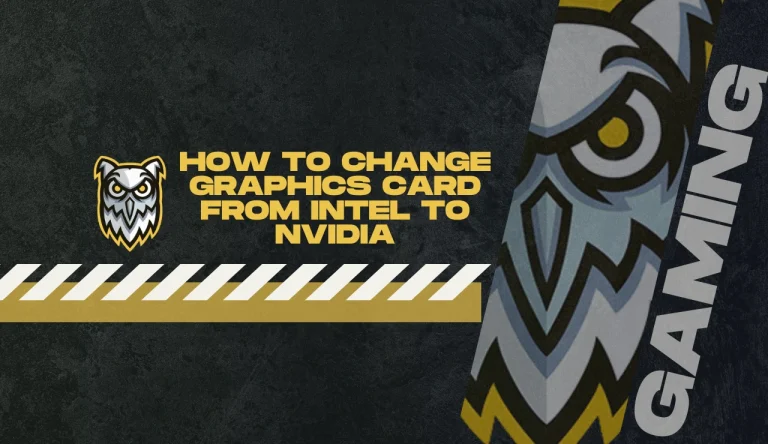Is Nvidia The Best Graphics Card
Nvidia, a prominent player in the graphics card industry, has garnered considerable attention and acclaim. This article delves into the question of whether is Nvidia the best graphics card available.
Adopting an objective and analytical approach, we will evaluate several key factors to determine its superiority.
Firstly, we will assess performance and power capabilities, scrutinizing Nvidia’s ability to deliver exceptional graphics processing prowess while minimizing energy consumption.
Secondly, we will consider price and value by analyzing cost-effectiveness in relation to competitors’ offerings.
Furthermore, compatibility and connectivity options will be evaluated to ascertain how well Nvidia integrates with various systems.
Additionally, this article will explore user experience and features unique to Nvidia graphics cards. By examining these aspects comprehensively, readers can gain insights into their potential benefits.
Lastly, personal preferences and gaming needs will be taken into account as individual factors play a significant role in choosing the ideal graphics card. This analysis aims to equip readers with valuable information for making informed decisions when considering if Nvidia truly stands as the best choice among other contenders in the market.
Performance and Power: Analyzing the Graphics Card’s Capabilities

The performance and power of a graphics card are key factors to consider when evaluating its capabilities. When analyzing benchmarks, it becomes evident that Nvidia graphics cards consistently deliver top-tier performance in various applications and games.
Nvidia’s GPUs often outperform their competitors in terms of raw processing power, allowing for smoother gaming experiences and faster rendering times for graphic-intensive tasks.
Additionally, comparing power consumption reveals that Nvidia graphics cards tend to be more energy-efficient compared to other brands, resulting in lower electricity costs and reduced heat output. This combination of high performance and efficient power usage makes Nvidia an attractive choice for gamers, content creators, and professionals alike.
However, it is important to note that individual needs and budget constraints should also be taken into account when determining the best graphics card for specific use cases.
Price and Value: Evaluating the Cost-Effectiveness of Nvidia Graphics Cards
One aspect to consider when evaluating the cost-effectiveness of graphics cards is their price relative to their performance capabilities. The cost vs performance relationship is an essential factor for consumers looking to make informed decisions about purchasing a graphics card. Nvidia, as a prominent player in the market, offers a range of options that cater to different budgets and requirements.
While some may argue that Nvidia’s graphics cards are more expensive compared to competitors, it is crucial to take into account the overall value they provide. Nvidia’s products often excel in terms of performance and efficiency, offering advanced features and technologies that justify their higher price point.
Additionally, market competition plays a significant role in determining the pricing strategy adopted by Nvidia and other manufacturers, with fluctuations occurring based on supply and demand dynamics. Ultimately, individuals should carefully assess their specific needs and budget constraints before making a decision regarding the cost-effectiveness of Nvidia graphics cards.
Compatibility and Connectivity: Assessing the Graphics Card’s Integration Options
Compatibility and connectivity play a crucial role in evaluating the integration options of a graphics card, necessitating a thorough examination of its ability to seamlessly interface with various hardware components and software systems. When assessing compatibility, it is important to consider factors such as the graphics card’s form factor, power requirements, and slot type.
Nvidia graphics cards are known for their wide range of compatibility options, offering different form factors (such as PCIe or AGP) to fit various motherboard architectures. In terms of connectivity options, Nvidia cards typically provide multiple display outputs, including HDMI, DisplayPort, and DVI ports. This allows users to connect their monitors or other devices without any compatibility issues.
Additionally, many Nvidia graphics cards also support technologies like SLI (Scalable Link Interface), which enables users to combine multiple GPUs for enhanced performance. Overall, Nvidia’s focus on providing comprehensive integration options ensures that their graphics cards can seamlessly integrate into various hardware setups and offer versatile connectivity choices for users.
User Experience and Features: Exploring the Unique Offerings of Nvidia Graphics Cards

User experience is enriched by the unique features and advancements found in Nvidia’s graphics cards, allowing for immersive gaming experiences and seamless multitasking capabilities. Nvidia offers a range of graphics software that enhances user experience, such as GeForce Experience, which optimizes display settings for optimal performance.
This software provides automatic updates for drivers and game profiles, ensuring users have the latest enhancements and optimizations. Additionally, Nvidia’s graphics cards support technologies like G-Sync, which eliminates screen tearing and stuttering during gameplay, providing smooth visuals.
Another notable feature is Ansel, a screenshot tool that allows users to capture high-resolution images with customizable filters and 360-degree views. These features contribute to an enhanced overall user experience by providing advanced graphical capabilities and optimizing display settings to deliver exceptional visual quality in games and other multimedia applications.
Personal Preferences and Gaming Needs: Considering Individual Factors in Choosing the Right Graphics Card
When considering the appropriate graphics card for their gaming needs, individuals must take into account personal preferences and specific requirements. Different gamers have varying gaming requirements, including the type of games they play, the level of graphics quality they desire, and the resolution at which they want to play.
Additionally, personal preferences such as brand loyalty or familiarity with a particular manufacturer’s software can also influence their choice. Some individuals prioritize high frame rates and smooth gameplay experience while others may value realistic visuals and immersive environments.
Lastly, budget constraints may also play a role in determining the graphics card selection. Ultimately, it is crucial for gamers to carefully evaluate their gaming requirements and personal preferences before making a decision on which graphics card to purchase.
Frequently Asked Questions
Conclusion
In conclusion, Nvidia graphics cards offer exceptional performance and power, making them a top choice for gamers and professionals alike. Their cost-effectiveness is noteworthy as well, considering the value they provide in terms of price and performance.
Additionally, their compatibility and connectivity options make them versatile and easy to integrate into various systems. The unique features offered by Nvidia enhance the user experience, further solidifying their reputation as one of the best graphics card brands available. Ultimately, choosing the right graphics card depends on personal preferences and individual gaming needs.






